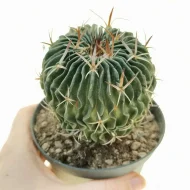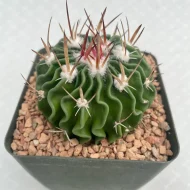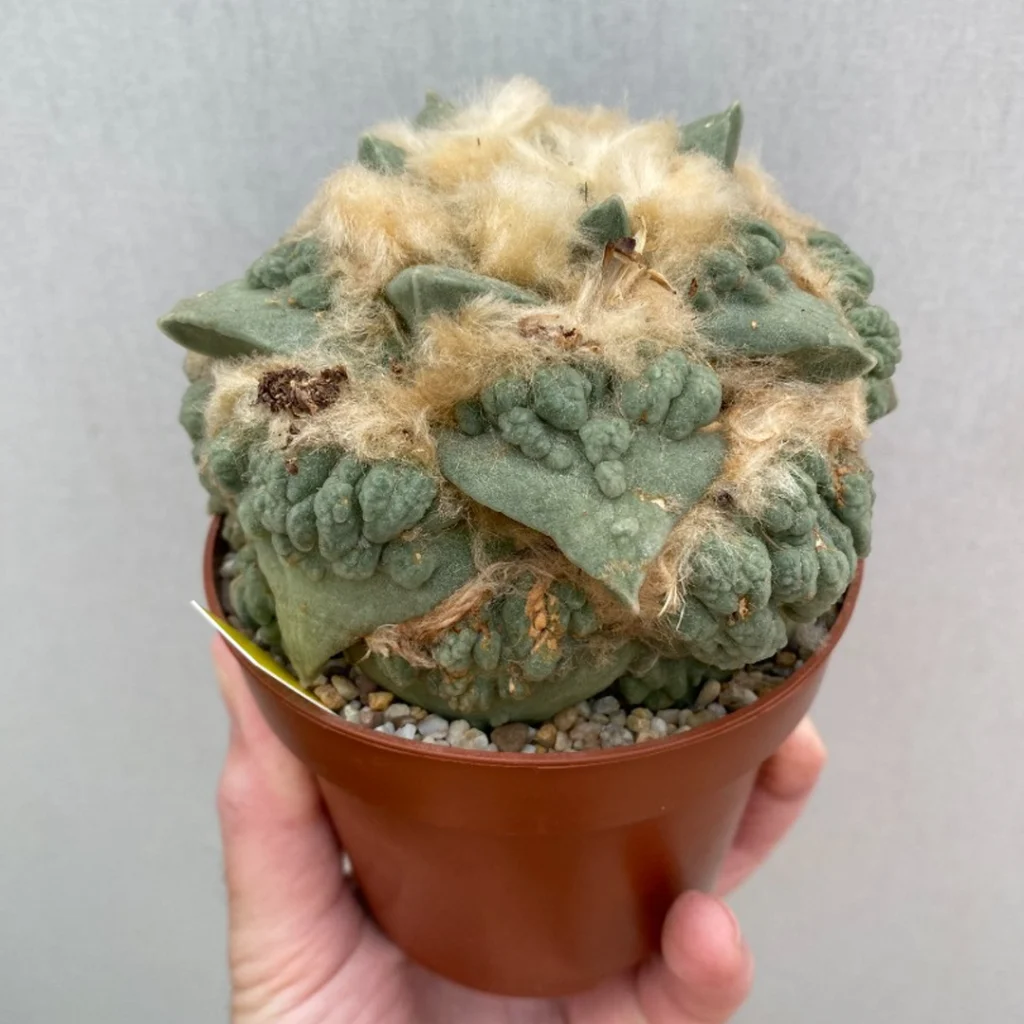Echinofossulocactus is a lesser-known yet highly interesting genus of cactus that originates from the arid regions of Mexico. This cactus is easily recognizable due to its unique ribbed, cylindrical stems and strikingly beautiful flowers that can vary in color, typically appearing in shades of yellow, orange, or red. The stems of Echinofossulocactus are heavily ribbed, often with distinct grooves running along them, which gives the cactus its name, “fossulocactus,” meaning “grooved cactus.”
The cactus grows slowly and can reach a moderate size over time. The spines of Echinofossulocactus are prominent and sharp, usually clustered along the ribs, giving the cactus a spiny, almost spiked appearance. Its flowers emerge in spring or summer, often from the top of the cactus, in stunning bursts of vibrant color. These blooms are typically funnel-shaped and are attractive to pollinators like bees and butterflies.
Echinofossulocactus is highly adaptable to dry and sunny environments, making it an excellent choice for xeriscaping and desert gardens. It thrives in well-draining soil and requires minimal water, making it a low-maintenance plant that is suitable for collectors and gardeners who are experienced with cactus care.
How to Care
- Light: Provide full sun for optimal growth and flowering. It thrives in bright, direct sunlight for at least 6 hours a day.
- Watering: Water infrequently, allowing the soil to dry out completely between waterings. Overwatering can cause root rot, so ensure good drainage.
- Soil: Use a well-draining cactus or succulent mix. You can improve drainage by adding sand or perlite to the soil.
- Temperature: Prefers warm conditions and can tolerate high temperatures. Avoid cold drafts or freezing conditions. It grows best in temperatures between 20°C and 30°C (68°F to 86°F).
- Fertilizer: Fertilize during the growing season (spring to summer) with a balanced cactus fertilizer to encourage flowering.
- Repotting: Repot every few years or when it outgrows its pot. Ensure the new container has drainage holes.























